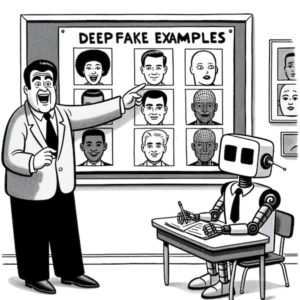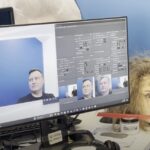Welcome to the latest edition of FindBiometrics’ AI update. Here’s the latest big news on the shifting landscape of AI and identity technology:

OpenAI is in talks to sell employee shares at a price that would value the company at $86 billion. That would make it three times as valuable as it was half a year ago. Thrive Capital is said to be involved in the proposed tender offer. Selling employee shares would help OpenAI staff benefit from the company’s success, though not so much for CEO Sam Altman, who says he only holds an “immaterial” position through his accelerator program Y Combinator. (He is already very rich.)
The US Commerce Department has announced new export controls on AI chips, framing it as an effort to slow the advancement of China’s military. New restrictions include tighter control of exports to countries that are deemed to be at risk of sending them along to China, and new rules concerning chipmaking tools, among other provisions.
Nvidia is bringing its TensorRT-LLM open-source library to Windows, enabling generative AI processing on Windows PCs that use the company’s RTX-based graphics processing units. This could lead to a considerable expansion of AI computing beyond the big data centers that currently power it.
Researchers at Huawei and the Huazhong University of Science and Technology in China have developed a way of capturing dynamic motion in 3D, such as a figure dancing, using a 2D camera. They’ve done it using a four-dimensional version of “Gaussian splatting”, a 3D imaging method used in computer graphics. The fourth dimension is, of course, time.
Researchers at Southern Methodist University in Texas, meanwhile, have been using generative AI to build a demographically rich database of synthetic images of humans to help train facial recognition systems. The images were constructed using the Nvidia DGX SuperPOD platform, and the project being among the first in a recently established “Intelligent Systems and Bias Examination Lab”.
And a research team led by University of California San Diego’s fourth-year medical student Timothy Heintz has developed an AI-powered tool that uses face biometrics to assess a patient’s experience of pain during a medical procedure. The tool was trained on 143,293 facial images labeled as depicting patients in pain or not in pain, and can now make predictions that align 88 percent of the time with Critical-Care Pain Observation Tool (CPOT), a manual diagnostic method.
Sumsub has launched a set of four Machine Learning-driven models designed to enable the detection of deepfakes in images. And the company is offering its “For Fake’s Sake” model set for free, inviting the AI research community to combine them with their own methods of deepfake analysis to see if they can get even stronger results.
AI experts consulted in a report for the major Japanese network TBS said there is evidence that Russian President Vladimir Putin has been using multiple doppelgangers in public appearances. Specialists in facial, voice, and gait recognition weighed in, applying their technologies to video footage.
The chatbot’s take: Apparently Putin is not the first world leader to use body doubles, but he’s not exactly in good company.

–
October 20, 2023 – by Alex Perala







Follow Us